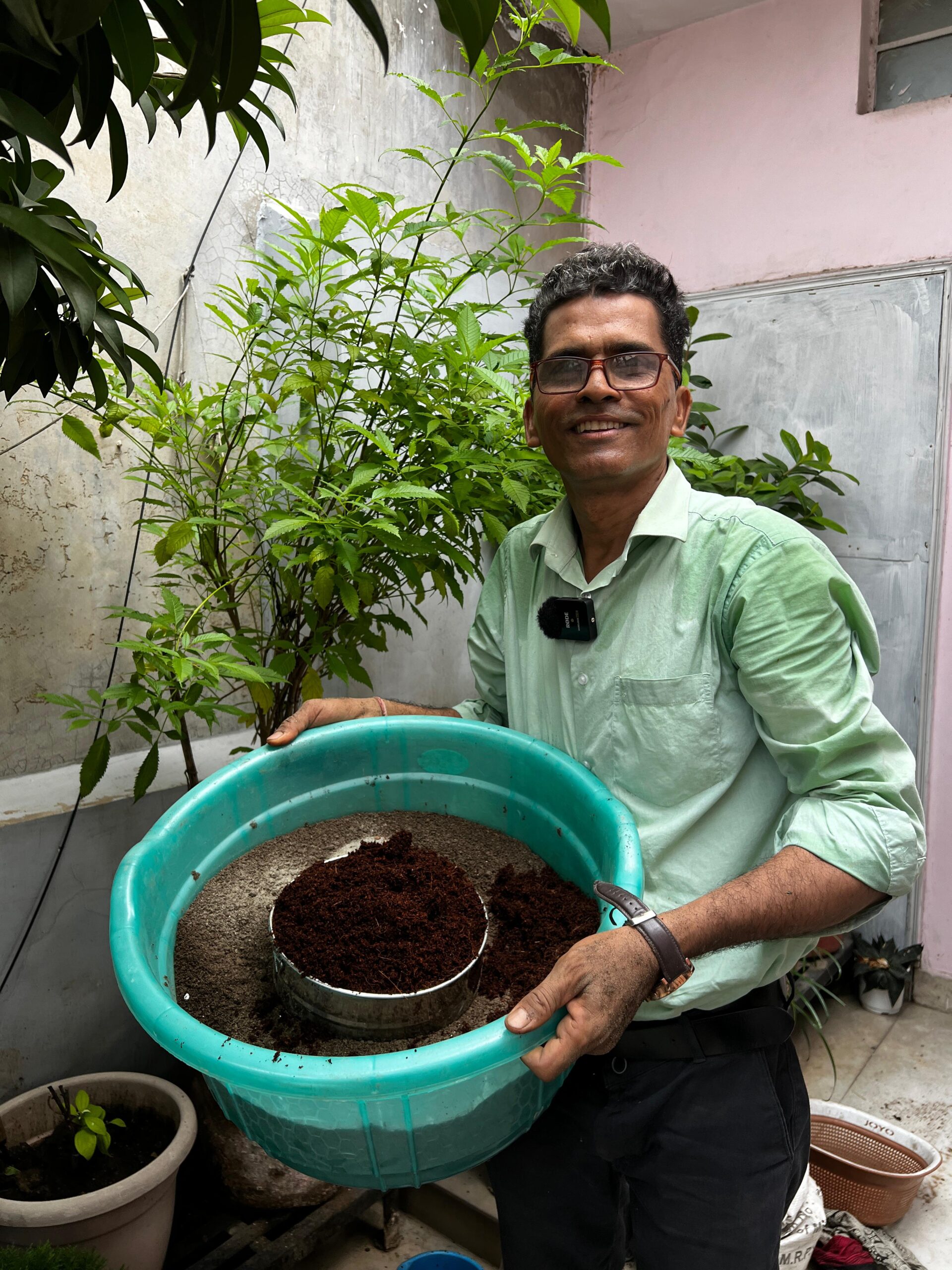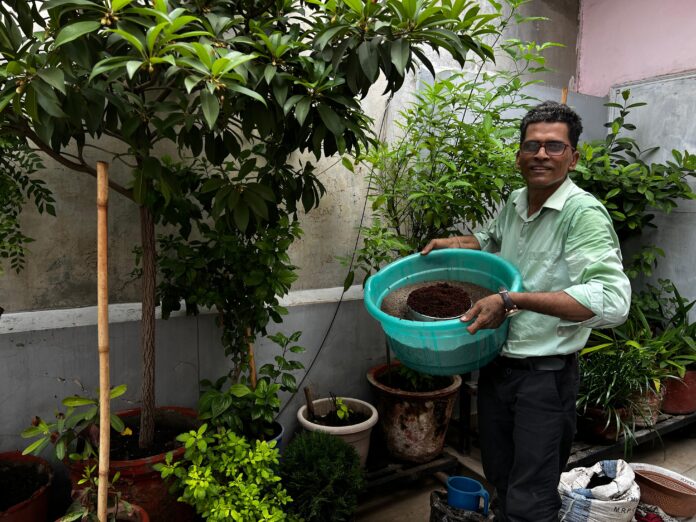Preparing the ultimately perfect soil mix for the potted plants is very crucial for their health, thriving growth, & optimum longevity. Pravin Mishra shares some very valuable expert advice on how to mix soil for potted plants, always ensuring that all your indoor & outdoor plants thrive in their containers in the best possible manner. No matter if you are a beginner or an experienced gardener gardening for several years, following the tips discussed in this blog will considerably help you in creating the perfect soil mix that meets the specific requirements of your potted plants.
-
Understanding the Composition of the Soil Thoroughly
Pravin Mishra begins by explaining the significance of understanding all the basic components of soil in a thorough manner. A good soil mix for potted plants should surely strike a perfect balance between the aeration, water retention, & availability of essential nutrients. The three major components Mishra emphasizes are:
- Garden Soil – Garden soil usually forms the base of the mix & provides the most essential minerals for the potted plants. However, it is usually too dense on its own for the potted plants, so it necessarily requires to be combined with other components.
- Organic Matter (Compost) – Compost usually adds several essential nutrients to the soil & considerably improves its overall structure. It also likely helps in retaining moisture, which is the most important aspect for plant health.
- Aerating Materials Consisting of Vermiculite, Sand, or Perlite) – These particular materials always ensure the right provision of good drainage & thus the usage of these materials very likely prevent the soil of the pots from to become compacted, which can lead to the rotting of the roots.

-
The Secret Behind an Ideal Soil Mix
Pravin Mishra perfectly shares his recommended recipe of soil mix, that is both simple as well as effective for the widest range of potted plants:
- 40% of Garden Soil – You can initiate the preparation of the soil by including garden soil as the primary base. This particular soil provides the most essential minerals & a perfect structure that very optimally supports plant roots.
- 30% Compost or Organic Matter – You may add compost to enrich the garden soil with several required nutrients & various organic matter, which is very vital for the healthy growth of plants.
- 30% Aerating Material Consisting of Sand, Perlite, or Vermiculite – In order to ensure the proper drainage & also adequate aeration, you need to mix in some amount of sand, perlite or vermiculite. This largely helps in preventing the problem of waterlogging & compaction, which can prove to be detrimental to the potted plants.
-
Customizing the Soil Mix for Different Plants as Per Suitability
One of the major points Pravin Mishra highlights is the significance of customizing the soil mix that is based on the specific requirements of your plants:
- Cacti & Succulents – These particular plants require excellent drainage, so you should likely increase the proportion of perlite or sand in the mix to around 50%, reducing the component of garden soil.
- Flowering Plants – Flowering plants usually prefer a slightly richer soil, so you can add more and more compost or organic matter to the particular mix. The part of compost can go up to 40%, in order to support the nutrient needs of the potted flowering plants.
- Herbs & Vegetables: These particular plants thrive in a very nutrient-rich soil with adequate drainage. The standard mix of 40% garden soil, 30% aerating material and 30% compost works well, but you can add some extra compost if the plants seem to require more nutrition.
-
Adding Fertilizers & Soil Conditioners
Pravin Mishra effectively advises adding some rich organic fertilizers or soil conditioners to your mix, depending on the kind of plants you are growing. For instance:
- Organic Fertilizers – You may add some well-rotted manure or organic plant food in order to boost the nutrient level in the pots.
- Lime or Gypsum – The gypsum or lime can be added to adjust the level of pH of the soil if necessary. For instance, lime raises pH, converting the soil to be more alkaline. This particular alkaline soil becomes more suitable for the plants like vegetables.
- Coco Peat – Mishra suggests using adequate coco peat in order to improve the level of moisture retention in the ideal soil mix, especially for those plants that require the most consistent watering.
-
Mixing & Storing the Soil
Once all of the necessary ingredients are well-assembled, Pravin Mishra very well demonstrates how to mix them thoroughly in order to create a very uniform soil mix. He then stresses the right significance of mixing well in order to ensure that all of the necessary components are evenly distributed.
He also recommends the preparation of soil mixes in several batches & storing them in an absolutely dry, covered area, so they are ready for usage whenever you require to pot or repot plants.
Creating the right soil mix for the potted plants is a fine art that very significantly requires a thorough understanding of your plants’ specific needs & combining various ingredients in the correct proportions. The guide of Pravin Mishra offers a very practical & straightforward approach to mix soil, ensuring your potted plants receive the most optimal balance of nutrients, aeration, and the right level of moisture. By following his valuable tips & adjusting the mix to suit various plants, you can create a very thriving indoor or outdoor garden that flourishes all year around.



